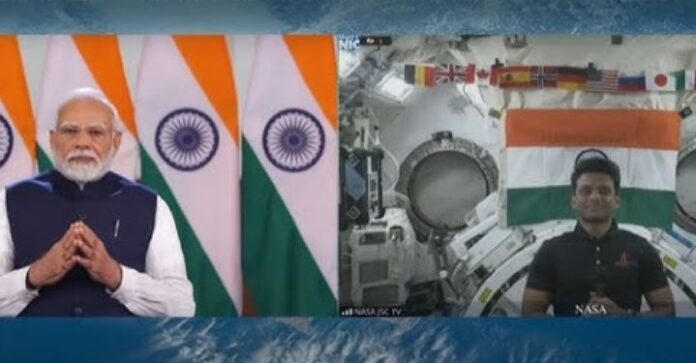When astronaut Shubhanshu Shukla addressed Prime Minister Narendra Modi in a recent virtual exchange, he painted a vivid tapestry of what life is truly like on board the International Space Station (ISS). Among the most mesmerizing—and challenging—aspects of orbital living, Shukla highlighted the surreal experience of witnessing 16 sunrises and 16 sunsets every 24 hours.
The Science Behind the Spectacle
Orbiting Earth at roughly 28,000 kilometers per hour, the ISS circles our planet approximately every 90 minutes. From this vantage point, residents aboard the station observe a sunrise or sunset roughly every 45 minutes. While this frequency offers stunning visuals—from auroras dancing below to the shifting palette of Earth’s landscapes—it also radically shifts the perception of time. Shukla explained that this phenomenon, while breathtaking, also compresses the concept of “daytime” and “nighttime” into a fast-paced loop.
Adjusting the Body Clock in Microgravity
Living in microgravity is already a challenge for the human body, but Shukla shared that managing one’s biological clock aboard the ISS adds complexity to the equation. The station’s crew relies heavily on meticulously planned schedules and artificial light cycles. “We use LED lights that mimic Earth’s dawn and dusk to help regulate our circadian rhythm,” Shukla explained. These lights are programmed to simulate natural lighting conditions: brighter during work periods and dimmer around sleep times. Without such systems in place, astronauts would struggle with sleep deprivation and irregular hormone cycles.
A Day in the Life
Shukla offered a glimpse into a typical day’s routine, which unfolds like clockwork:
- 6:00 AM (Earth-equivalent time): Even while orbiting, astronauts maintain a terrestrial schedule synced to Coordinated Universal Time (UTC) to stay aligned with mission control across different countries. Simulated sunrise lights gradually turn on as the station “wakes up.”
- Morning Checks and Experiments: After breakfast in squeeze bags or specially designed packets, crew members begin health monitoring routines, which include cardiovascular, bone density, and muscle mass assessments. Microgravity accelerates bone and muscle loss, so activities like treadmill runs—with harnesses—and resistance training are daily essentials.
- Science and Maintenance: From studying crystallization processes and plant biology to checking station systems and performing maintenance, hours are packed with scientific inquiry and technical upkeep. Shukla emphasized teamwork across disciplines—engineers testing hardware, biologists studying tissue growth, and even educators conducting live sessions with students on Earth.
- Mid-Day Break: Meals are not just about nutrition; they’re moments of social connection. The crew floats together in the galley, chatting while sipping rehydrated soups or a pouch of fruit cocktail.
- EVA Preparation: During spacewalk days, astronauts spend several hours gearing up, reviewing procedures, and donning the Extravehicular Mobility Unit (spacesuit). Shukla likened the process to “a slow, deliberate choreography—every toggle and valve must be double-checked.”
- Evening Wind-Down: As rotations of the sun pass quickly, the lighting dims to simulate sunset, preparing eyes and body for rest. Warm meals—sometimes Indian dishes prepared specially for Shukla’s crew—offer comfort after a full day.
- Lights Out: The station’s bunks are small, cozy pods with sleeping bags tethered to walls. Without gravity, sleep is weightless but not always restful. Astronauts contend with floating pillows, a constant hum of the station, and the lingering “jet lag” of rapid light cycles. Earplugs, eye masks, and strict “lights-out” times help simulate night.
Mental and Emotional Resilience
Shukla opened up about the psychological aspect of living in such an extraordinary—but isolating—environment. Despite seeing Earth from above, astronauts can feel distanced from loved ones. The compressed sunrises and sunsets, he said, “can make time feel surreal.” Communication windows with mission control and video calls with families serve as critical emotional anchors. Personal rituals—like listening to favorite music or photographing Earth—support morale. “When I see India’s vast landscapes passing beneath me,” Shukla described, “there’s a profound connection with home.”
Scientific Significance
Beyond the poetic, the rapid sunrises and sunsets carry scientific weight. Observing how light interacts with Earth’s atmosphere from space, researchers gain insights into climate patterns, weather systems, and human-made pollution. Cameras on the ISS track shifting clouds, storms, and even nighttime city lights—data that complements satellites with slower orbits. Shukla underlined how each day offers new opportunities: “Seeing the same location 16 times means noticing subtle changes—like lake colors shifting or wildfire smoke spreading.”
Adaptation and Innovation
Day after day, Shukla’s team refines life aboard the orbiting outpost through trial and improvement:
- Lighting Adjustments: Astronauts collaborate with engineers to tweak LED settings—color temperature, intensity, timing—to better mimic Earth’s sunrise-to-sunset cycle for improved sleep and mood.
- Habitat Efficiency: Storage, layout, and usability evolve through crew feedback. Shukla noted, “We learn what works, what doesn’t, and pass that knowledge forward to future missions.”
- Virtual Recreation: Simple gestures—like virtual-reality Earth-view apps or interactive video calls—help psychologically counterbalance the light-speed dance of day and night.
Looking Ahead: Lunar and Martian Missions
Shukla reflected on how ISS life informs long-haul missions. Definitive schedules, lighting control, psychological support systems—all are prototypes for missions to the Moon or Mars, where day–night cycles differ drastically. On Mars, for example, a sol (Martian day) lasts about 24 hours and 39 minutes—close enough to Earth’s cycle but different enough to require tailored lighting and scheduling. The ISS serves as a proving ground for those systems. “Every 45‑minute sunrise helps us think: how do you scale that system to another planet?” Shukla mused.

